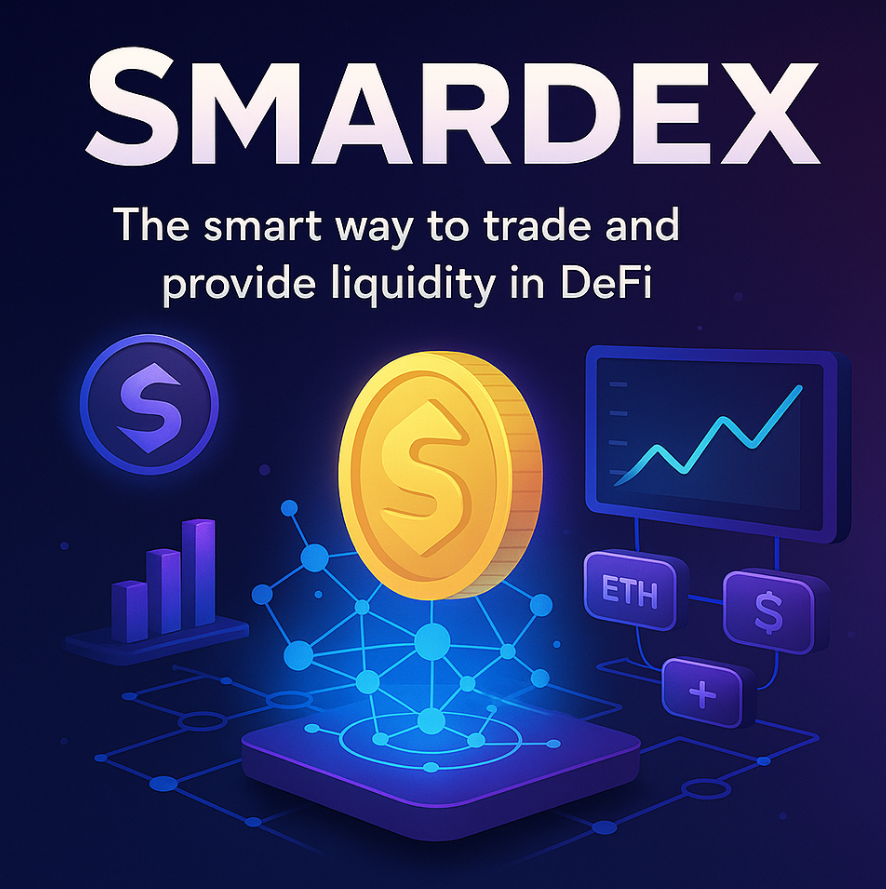
What Is Smardex and Why It Matters in the DeFi Ecosystem
The growth of decentralized finance (DeFi) has opened unprecedented financial opportunities—but it has also introduced unique risks. One of the most significant of these is impermanent loss, which affects liquidity providers on traditional automated market makers (AMMs). Smardex offers a new solution to this long-standing issue through an advanced AMM model that dynamically adjusts pricing to reduce volatility-based losses.
More than just a DEX, Smardex is a smart liquidity engine that operates across multiple chains, providing capital efficiency, yield optimization, and accessible tools for both traders and developers.
How Smardex Mitigates Impermanent Loss Through Smart Liquidity
Unlike constant-product models (like Uniswap’s x*y=k formula), Smardex uses a proprietary algorithm to optimize the price curve and automatically rebalance liquidity pools. This process:
-
Helps LPs retain more value during token price divergence
-
Smooths the effects of market volatility
-
Increases profitability by reducing unrecovered loss
By applying financial theory to smart contract architecture, Smardex improves DeFi’s reliability as an income-generating tool.
Key Features of Smardex That Support a Smarter DeFi Experience
-
Impermanent Loss Reduction: Dynamic AMM design minimizes value erosion for LPs
-
Multi-Chain Functionality: Live on Ethereum, Binance Smart Chain, Avalanche, and more
-
Smart Routing Technology: Efficient trade execution through low-slippage routing
-
SDEX Token Utility: Enables governance, staking, and liquidity mining
-
Permissionless and Transparent: No KYC, full user custody, and open contract access
-
Developer-Friendly APIs: Open integration support for wallets, dashboards, and dApps
Smardex prioritizes both usability and safety, making it ideal for everyone from casual investors to DeFi protocol builders.
Pros and Cons of Using Smardex
Pros
-
Dramatically reduces impermanent loss risks
-
Operates on multiple chains with low fees and fast execution
-
Offers real yield via staking and liquidity mining
-
Audited and transparent smart contracts
-
Developer support with flexible integration
Cons
-
Early-stage adoption means smaller pool liquidity compared to older DEXs
-
Requires some DeFi knowledge to fully benefit from its advanced tools
-
SDEX token value is influenced by market conditions
Smardex Guide: How to Use the Platform
Step 1: Connect a WalletUse MetaMask, Trust Wallet, or Coinbase Wallet to access the Smardex interface.
Step 2: Select a NetworkChoose between supported chains like Ethereum, BNB Chain, or Avalanche.
Step 3: Trade or Add LiquidityYou can swap tokens or provide liquidity to a pool that adjusts automatically to reduce loss.
Step 4: Stake TokensStake LP tokens or SDEX to earn rewards and support the network.
Step 5: Track and OptimizeUse the dashboard to monitor positions, reinvest gains, or move capital across networks.
These features are available directly through the Smardex platform, with real-time data and responsive UX.
Smardex and the EEAT Framework in DeFi
Experience, Expertise, Authoritativeness, and Trustworthiness (EEAT) are key in evaluating any blockchain protocol. Smardex meets these criteria through a research-backed AMM design, transparent governance, and community-driven development.
Forbes has reported on the risks of impermanent loss in DeFi, noting it as a key reason LPs withdraw from liquidity pools. Smardex resolves this with algorithmic balancing and delivers consistent value across market conditions.
Security and Audits
Smardex enforces high security standards. All smart contracts are independently audited. The platform includes:
-
Multi-signature governance
-
Hardware wallet integration
-
Transparent contract publishing
-
Risk monitoring for protocol integrity
This infrastructure ensures a secure environment for capital flow, reducing the likelihood of exploits and bugs.
Smardex Integration for Developers and Builders
Smardex offers APIs and SDKs for easy integration into DeFi dashboards, aggregators, and wallets. These tools support advanced DeFi composition—an idea also promoted by Coinbase in its outlook on Web3 interoperability.
By allowing open-source access to routing algorithms and liquidity data, Smardex supports rapid innovation across decentralized applications.
Expanding Reach Through Binance Smart Chain
Smardex’s launch on Binance Smart Chain allows low-fee trades and fast execution for a global user base. BNB holders can bridge tokens, trade, and earn yield using Smardex’s advanced liquidity management tools—bringing smarter AMMs to one of the world’s most active chains.
Smardex Use Cases Across the DeFi Ecosystem
-
Liquidity Providers: Protect against impermanent loss and earn consistent fees
-
DeFi Traders: Access deep liquidity and smart routing for better execution
-
Developers: Embed Smardex into dApps using APIs and SDKs
-
DAOs and Funds: Manage diversified liquidity across networks
-
Retail Users: Enjoy simplified access to complex yield strategies
Frequently Asked Questions (FAQ)
**What is Smardex?**Smardex is a cross-chain DEX and automated market maker designed to reduce impermanent loss and provide more stable returns for liquidity providers.
**Is Smardex audited?**Yes. All Smardex smart contracts are independently audited and verified.
**What is the SDEX token used for?**SDEX is the native token used for governance, staking, and earning yield on the platform.
**Do I need KYC to use Smardex?**No. Smardex is fully decentralized and permissionless.
**Which blockchains does Smardex support?**Currently, Ethereum, BNB Chain, and Avalanche—with more in development.
**Is Smardex suitable for beginners?**Yes, though basic knowledge of wallets and DeFi concepts is recommended.
Conclusion: Why Smardex Is a Smarter Choice in DeFi
Smardex offers a compelling solution to one of DeFi’s biggest pain points. With intelligent algorithms, cross-chain access, reduced impermanent loss, and full decentralization, it provides tools for traders, liquidity providers, and developers to succeed in an ever-changing financial ecosystem.
Backed by sound security, thoughtful design, and integrations with major networks like Binance, and highlighted by publications like Forbes and Coinbase, Smardex is helping to reshape the DeFi experience from the ground up.